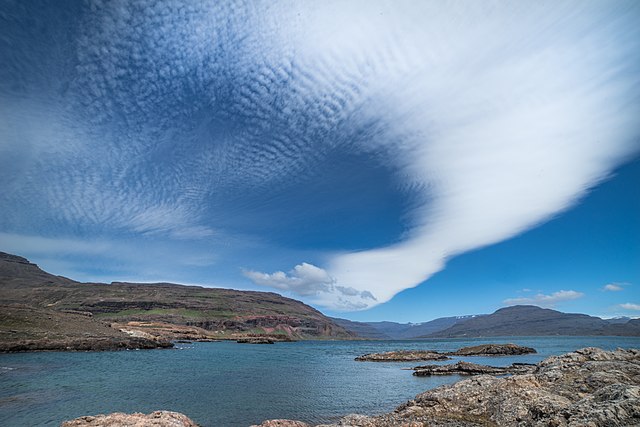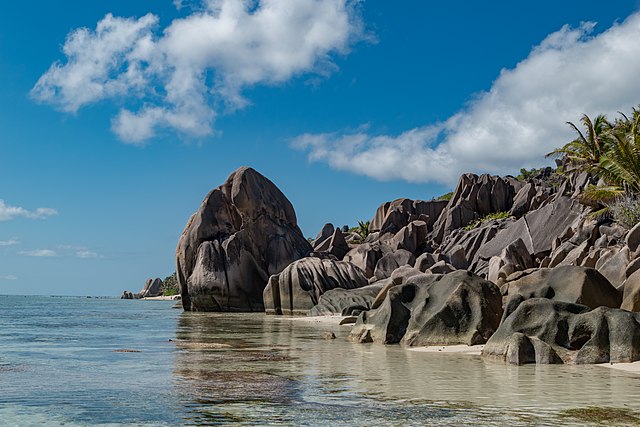
Thammasat University students who are interested in political science, history, geopolitics, international relations, government policy, arms negotiation and control, diplomacy, regional and area planning, society and culture, and related subjects may find a newly available book useful.
Handbook of Indo-Pacific Studies is an Open Access book, available for free download at this link:
https://directory.doabooks.org/handle/20.500.12854/97743
It is edited by Assistant Professor Barbara Kratiuk, who teaches at the Faculty of Political Science and International Studies, University of Warsaw, Poland, and colleagues.
The TU Library collection includes several books about different aspects of Indo-Pacific studies.
The Indo-Pacific is a biogeographic region, sometimes known as the Indo-West Pacific or Indo-Pacific Asia, comprising the tropical waters of the Indian Ocean, the western and central Pacific Ocean, and the seas connecting the two.
The term has been historically useful in marine biology and similar fields, since many marine habitats are continuously connected from Madagascar to Japan and Oceania.
The term first appeared in academic use in oceanography and geopolitics. The term geopolitically covers all nations and islands surrounding either the Indian Ocean or the Pacific Ocean, encompassing mainland African and Asian nations who border these oceans, such as India and South Africa, Indian Ocean territories such as the Kerguelen Islands and Seychelles, the Malay Archipelago, Japan, Russia and other Far East nations bordering the Pacific, Australia and all the Pacific Islands east of them, as well as Pacific nations of the Americas such as Canada or Mexico.
Association of Southeast Asian Nations (ASEAN) countries are considered to be geographically at the center of the political Indo-Pacific.

One contributor to the book, Professor Shankari Sundararaman of the Centre for Indo-Pacific Studies at Jawaharlal Nehru University, New Delhi, India, notes:
Over the last decade there has been a predominant shift in the use of the terminology of the Indo-Pacific, which has become a part of the foreign policy lexicon of several states that earlier referred to this region as the Asia-Pacific. This shift in terminology is not merely a change in nomenclature but represents the expansion of a region into a mega-region. The Asia-Pacific emerged as a post-Cold War concept driven from the factors of economic integration which also allowed for closer security level ties. On the other hand the Indo-Pacific refers to a region that transcends the tradition understanding of a region as being geographically “contained” but is more of a mega-region as a result of two factors. First, it implies a critical shift in the maritime extents that link the Indian and the Pacific Oceans as a singular maritime unit. And second, it also links the territorial extents that encompass the littoral states of these oceanic extents as these states have an increasing stake in maintaining the rule-based order in the maritime regions that surround them. Today even as the countries of the region are trying to address what constitutes the definitional conceptions of the Indo-Pacific, it is imperative to understand how the Indo-Pacific differs from the Asia-Pacific. […] Even as the contemporary relevance of the Indo-Pacific is gaining prominence, it would be imperative to look at this context from a historical perspective as it indicates the dynamism that this concept has even as it continues to evolve. From the Indian perspective, the reference to the Indo-Pacific always draws its origins from the famous speech made by Prime Minister Shinzo Abe to the Indian parliament where he highlighted the metaphorical reference to the “confluence of the two seas” as being indicative of the interconnectedness between the Indian and Pacific Oceans.
In an article posted on the website of the International Studies Center (ISC), an affiliated unit of the Devawongse Varopakarn Institute of Foreign Affairs (DVIFA) of the Ministry of Foreign Affairs of Thailand, Associate Professor Jittipat Poonkham, who teaches International Relations in the Faculty of Political Science, Thammasat University, observes:
The Indo-Pacific is now an increasingly enlarged and expanded global region, reflecting the geoeconomic and geostrategic significance of the two oceans and a broader area of full-fledged cooperation.
As a strategic discourse, the Indo-Pacific is essentially contested. Different actors interpret this concept differently. Since its coinage of Free and Open Indo-Pacific (FOIP) Strategy by Japanese Prime Minister Shinzo Abe in 2016, nowadays there are at least eleven distinct strategic visions endorsing the Indo-Pacific since the European Union has recently released the latest version of Indo-Pacific Strategy in September 2021. It follows the likes of Japan, Australia, India, the US, France, ASEAN, Taiwan, Germany, the Netherlands, and the United Kingdom.
At the same time, the Indo-Pacific region is a site of great power competition where a potential conflict looms large even before the COVID-19 pandemic crisis. China envisioned it with a skeptic view: The Indo-Pacific is both essentially meaningless and strategically dangerous since it would exacerbate regional security dilemma. Chinese Foreign Minister Wang Yi disregarded the Indo-Pacific as an “attention-grabbing” concept, which would dissipate like “ocean foam”.
In contrast, the US, at least since 2017, has adopted Japan-initiated FOIP Strategy and expanded its geopolitical focal point. The Indo-Pacific concept is not value-free or neutral, but inherently political and value-laden. This strategic narrative has traversed and replaced the older Asia-Pacific concept, which previously emphasised globalisation, economic interdependence and connectivity and region-wide multilateral cooperation, culminated in the Asia Pacific Economic Cooperation (APEC) that Thailand is currently a chair in 2022.
Within the Indo-Pacific framework, the US has a double strategic goal to maintain its hegemonic power and prestige in the region as well as to constrain China’s assertive rise. By doing so, the US coupled with other like-minded states such as the quadrilateral security initiative (Quad) and now a trilateral security pact (AUKUS) have sought to rebalance a regional distribution of power in their favor and to contain Beijing in the South China Sea and the strait of Taiwan.
In addition, the US under President Joe Biden increasingly expands democracy promotion, culminated in a tougher stance on human rights, liberal economy and freedom of navigation as well as the highly contested, if not controversial, establishment of the Summit for Democracy. The latter risks dividing the world into two rivaling blocs along different value systems in the near future. […]
A traditional parable says that when the two big elephants fight, it is the small grass that suffers. The small/middle states can struggle to maintain hedging and equidistant strategy, but perhaps need to elevate a leading-from-the-middle strategy that constrains great power competition and binds these powers into region-wide norms and rules. While a multipolar and multiplex world order is an aspiring dream for many players, a bipolar system is now the emerging rule of the game in the twenty-first century great power politics. Against this backdrop, the Indo-Pacific region is now in flux. We are living in an era of uncertainty.

(All images courtesy of Wikimedia Commons)
